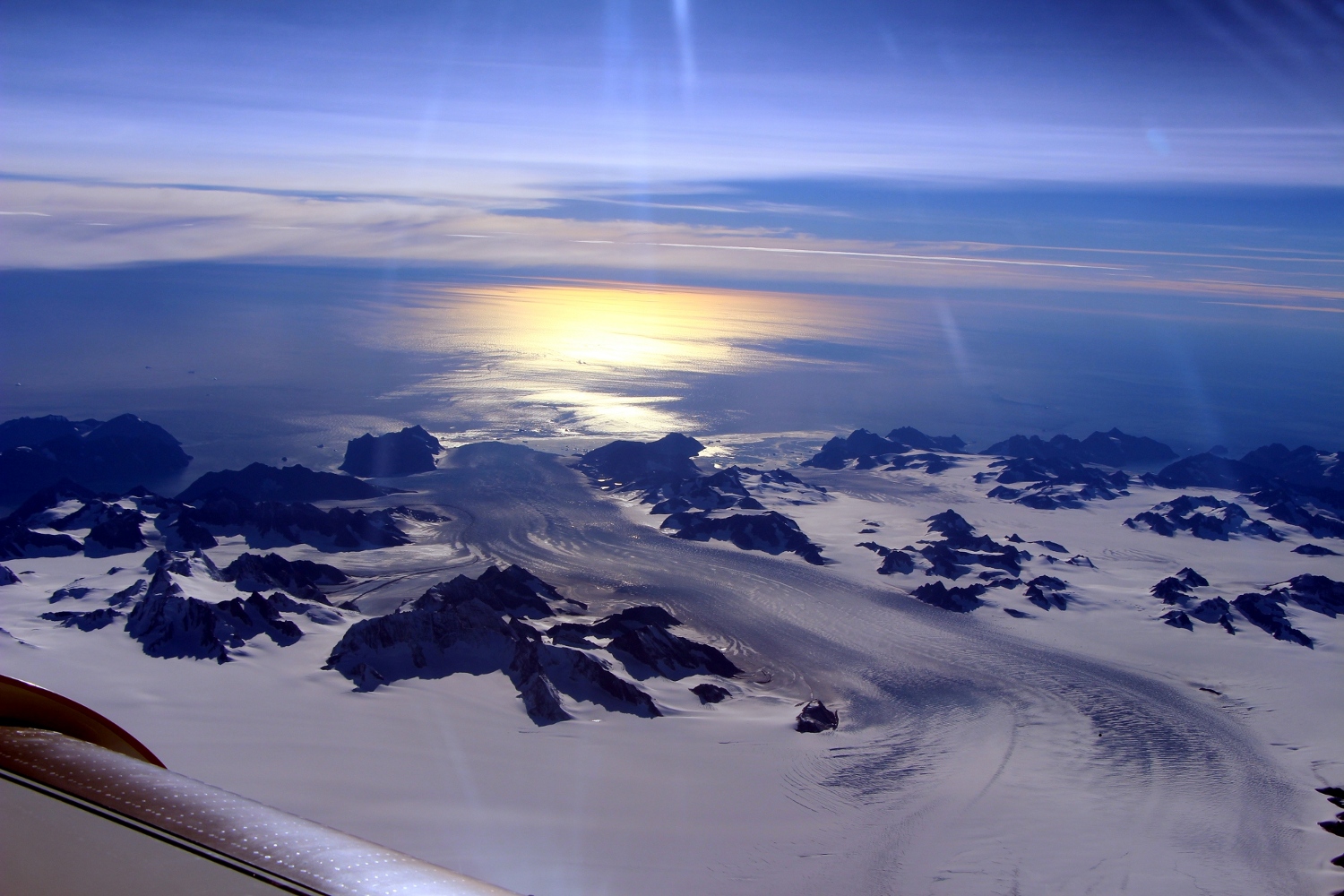While it's possible to halt global warming by halting our greenhouse gas emissions, sea level rise is a consequence that keeps on giving. Great ice sheets like Greenland and Antarctica have tremendous inertia—they're slow to melt but carry on melting even after the thermometer stabilizes. There are many reasons for this, including complex processes beneath glaciers that control their rate of downhill flow. And this complexity makes projecting ice loss over the coming century—and centuries—exceptionally challenging.
In the face of this formidable complexity, a new study led by Jason Box at the Geological Survey of Denmark and Greenland opts for a simple approach to projecting Greenland's future. Rather than attempting to simulate as much physics and detail as possible in a model, the team used a simple equation to calculate what portion of the ice is vulnerable in the current climate.
Finding the line
Glacial ice deforms under its own weight, flowing outward and downhill like slow-motion pancake batter. The low elevation and—for an ice sheet like Greenland's—coastal environment at the ice's edge is much warmer, and ice melts away here even as snow accumulates over the colder interior of the ice sheet. The point where the net result changes from gaining mass to losing mass is called the "equilibrium line." Increase air temperatures, and this line will push up to higher elevations, exposing more ice to melting until the glacier shrinks.
The new study maps the average equilibrium line from 2000 to 2019, based on data from NASA's Terra satellite. (You can identify it because snow cover above the equilibrium line is more reflective than bare ice below it.) Given that equilibrium line position, the researchers then apply the geometry of glacial ice to estimate the volume of ice that would disappear to bring the ice sheet into balance with its new climate.
That blurs over a ton of critical processes, like meltwater lubricating the base of the ice or ice flow changing the portion of the ice sheet that contacts a warming ocean. One consequence of this is that the study can give no time frame for its predicted ice loss. Their method assumes that enough time passes until the ice sheet finishes shrinking.


 Loading comments...
Loading comments...
